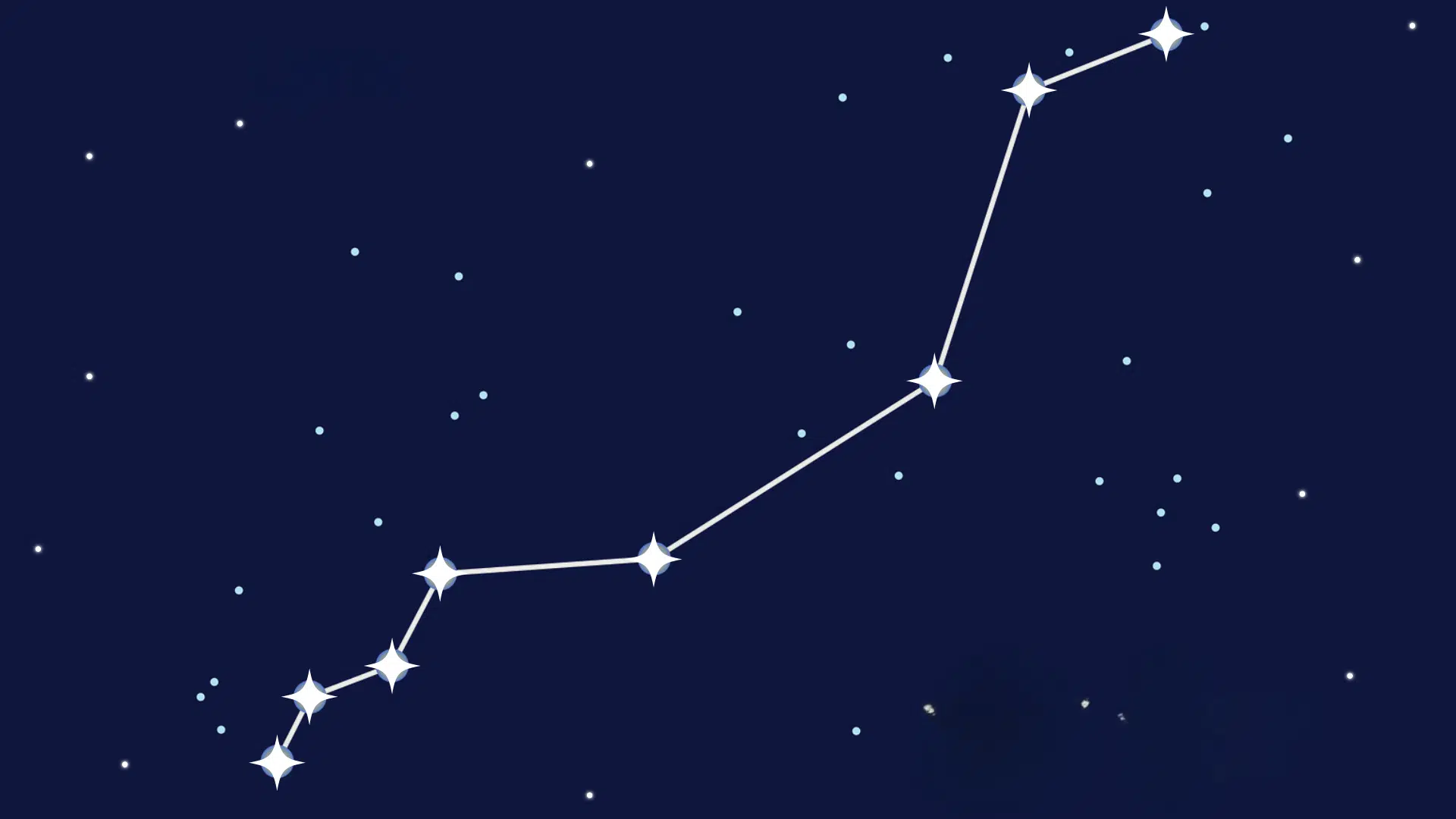Ready to see one of the night sky’s best-kept secrets? When you look up at the night sky, you find different constellations, and one of the most interesting is the Lynx constellation.
This star pattern is named after a wild cat with amazing eyesight. Unlike famous constellations like Orion or the Big Dipper, the lynx is really hard to spot in the sky.
You need excellent vision to see it, just like the sharp-eyed lynx animal. This constellation has an interesting history and several notable features that make it unique.
Keep reading to learn what the lynx is, where to find it, and why astronomers find it so unique and challenging to observe.
What is the Lynx Constellation?
The lynx constellation is a group of faint stars in the northern sky that forms the shape of a sneaky wild cat.
Polish astronomer Johannes Hevelius created this constellation in 1687 and named it Lynx because you need lynx eyes to see it.
The constellation doesn’t have many bright stars, which makes it one of the hardest constellations to spot. It covers a large area of sky but contains mostly dim stars that blend into the darkness.
The brightest star in the Lynx is called Alpha Lynx, but even that star is barely visible without a telescope.
This constellation sits between other more famous star patterns, making it easy to overlook even when you know where to look.
Where is the Lynx Located?


Here is the corrected table reflecting the Lynx, based on its accurate sky region, coordinates, visibility, and neighboring constellations:
| Aspect | Details |
|---|---|
| Sky Region | Located in the northern celestial hemisphere, between Ursa Major and Auriga |
| Right Ascension | Spans from about 6h 16m to 9h 43m across the night sky |
| Declination | Ranges from +33° to +62° in northern celestial coordinates |
| How to Find | Look north of Castor (in Gemini), between Auriga and Ursa Major, in a dim region |
| Best Visibility | Visible from latitudes between +90° (North Pole) and about −55° south |
| Neighboring Constellations | Ursa Major, Camelopardalis, Auriga, Gemini, Cancer, Leo, and Leo Minor |
What are the Characteristics of the Lynx Constellation?
The lynx features faint stars spread across a large area, making it one of the most challenging star patterns to observe in the northern sky.
1. Extremely Faint Stars
The Lynx is famous for having incredibly dim stars that challenge even experienced stargazers! Most of its stars are magnitude 4 or fainter, which means they’re hard to see with just your eyes.
The brightest star, Alpha Lyncis, shines at only magnitude 3.13, making it barely visible in suburban skies.
You will need perfectly dark conditions and good eyesight to spot the fainter stars in this constellation.
2. Long and Zigzagging Shape
The lynx has a long, winding shape that stretches across the northern sky like a skinny snake. Unlike compact constellations, the Lynx sprawls out over a huge area without a clear pattern.
The stars don’t really look like a cat, which makes it even harder to recognize. Its zigzagging line of faint stars can be confusing to follow from one end to the other.
The constellation extends for about 50 degrees across the sky, making it one of the larger constellations.
3. Contains Interesting Deep-Sky Objects
Even though the Lynx has faint stars, it contains some amazing galaxies and star clusters. NGC 2419 is a globular cluster nicknamed the “Intergalactic Wanderer” because it’s extremely far from the Milky Way’s center.
Several beautiful spiral galaxies hide within the Lynx’s boundaries, including NGC 2683, which astronomers call the UFO Galaxy.
These deep-sky objects require telescopes to see because they’re incredibly distant and dim.
4. Lacks Bright Piloting Stars
Unlike most constellations, the lynx doesn’t have any bright stars that help in the night sky. The lynx sits in a relatively empty region of space with dim, scattered stars.
Navigators and ancient travelers never used this constellation because it was too faint to see reliably.
Astronomers use nearby bright stars from other constellations to find the lynx’s location. This lack of prominent stars means the lynx often gets ignored in favor of flashier neighbors.
History of the Lynx Constellation


Image Source: Britannica Kids
The lynx constellation has a short history compared to ancient constellations because it was created relatively recently.
Polish astronomer Johannes Hevelius invented it in 1687 when he published his star atlas called Prodromus Astronomiae.
Hevelius wanted to fill the empty spaces in the northern sky between existing constellations. He chose the name Lynx because the constellation’s stars are so faint that only someone with the sharp eyes of a lynx could see them.
Unlike constellations from ancient Greece or Rome, the lynx has no stories passed down through thousands of years.
It represents the scientific age of astronomy when people mapped the sky more carefully with telescopes. The constellation was officially recognized and remains one of the 88 modern constellations today.
The Mythological and Cultural Significance of Lynx
The lynx lacks ancient mythology, as it was not part of any ancient mythologies. Instead, it was described by astronomer Johannes Hevelius during the Scientific Revolution era in the 1600s.
- Celtic Sky Hunter: Ancient Celtic druids believed a great celestial lynx prowled the northern skies, hunting souls that wandered too far from sacred paths.
- Vision Challenge: Hevelius named it Lyn, claiming that only observers with lynx-like sharp eyesight could see its extremely faint stars successfully.
- Native American Symbolism: Some indigenous North American tribes told stories of celestial lynxes as guardians of hidden knowledge and winter survival secrets.
- European Folklore: Medieval European tales described lynxes as creatures that could see through walls and darkness, inspiring the constellation’s association with perception.
- Astronomer’s Test: The Lynx became a legendary challenge among stargazers, with finding it proving one’s skill and dedication to astronomy studies.
Why the Lynx Constellation is One of the Sky’s Rarest Sights?


The lynx constellation ranks among the most difficult star patterns to observe in the entire night sky. Its brightest star shines at only magnitude 3.1, making it barely visible even under good conditions.
Most of its stars are magnitude 4 or fainter, requiring exceptionally dark skies and sharp eyesight to detect.
Johannes Hevelius deliberately created this constellation to challenge observers, naming it after the lynx because only those with lynx-like eyesight could spot it.
Light pollution makes the lynx nearly impossible to see in cities or suburban areas.
Even experienced stargazers need clear, moonless nights far from artificial lights to trace its faint zigzagging pattern across the northern sky.
Conclusion
The lynx constellation is truly one of the night sky’s most unique and challenging star patterns to find.
Its extremely faint stars require dark skies and excellent eyesight, just like the sharp-eyed lynx animal it’s named after.
The Lynx contains fascinating galaxies and star clusters that reward patient telescope users. Its zigzagging shape and lack of bright stars make it a fun challenge for experienced stargazers.
Next time you’re under dark skies, test your vision by trying to spot this elusive cosmic cat. Share your stargazing experience with us in the comments below.


















